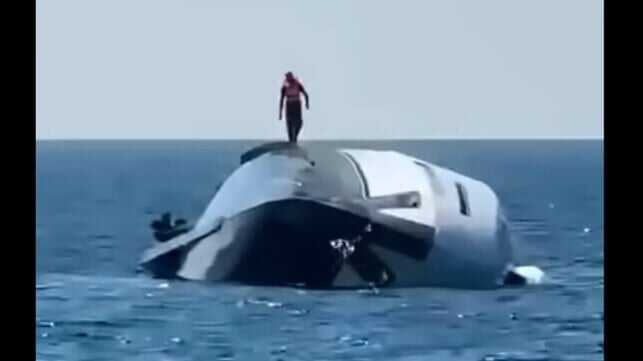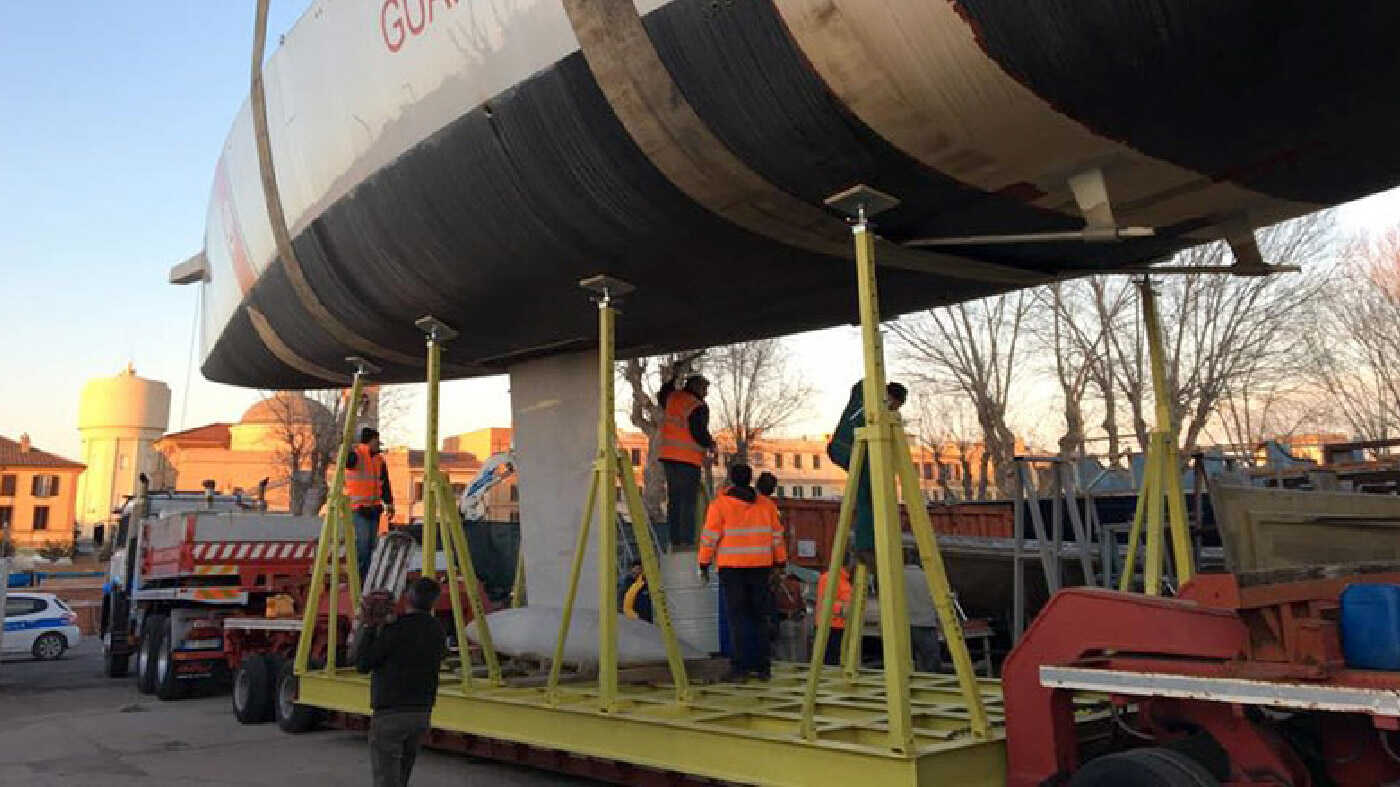Report: Lost Superyacht Was Vulnerable to Capsizing in Winds Over 60 Knots

But its stability book would not have warned the crew of the risk, MAIB found
A much-anticipated report on the sinking of the superyacht Bayesian suggests that the vessel's ultra-tall mast may have played a key role in its rapid knockdown and sinking off the coast of Sicily last year. The vessel did not experience flooding until after the force of the wind on the bare mast heeled Bayesian over far enough for water to come flooding in over the rail - not through a side door nearer the waterline, a scenario proposed by the vessel's builder.
In the early hours of August 19, 2024, Bayesian was anchored off Porticello, Sicily to wait out windy weather at sea. Its centerboard was raised, sails were all furled, and consumables were low - about 10 percent of maximum.
Winds at the anchorage began to pick up at 0300. By 0355 the wind had increased to 30 knots, and two minutes later the Bayesian began dragging anchor. The skipper and chief engineer were awakened, and the crew began starting the engines and preparing to maneuver. At this point, Bayesian was heeling 10-20 degrees to starboard from the force of the wind.
As soon as Bayesian was ready to maneuver, the skipper prepared to turn the vessel into the wind, which would make it less vulnerable to heeling. Moments later, the flying bridge awning tore off from port to starboard - and at 0406, Bayesian suddenly and violently heeled over to 90 degrees to starboard in less than 15 seconds.
One deckhand was thrown over the side in the capsizing, and the skipper and four other people were injured. Four people belowdecks clambered up and out of the interior, and there was a scramble to open windows and doors to get out of the vessel's rapidly-flooding saloon.
Bayesian was sinking rapidly, and a disorderly abandon-ship occurred as survivors attempted to get off the vessel. At about 0424, the skipper and a deckhand managed to free a liferaft from the port side and helped the survivors to clamber aboard. They watched the vessel slip below a few minutes later, then launched a parachute flare to call for aid. At 0443, they caught the attention of another nearby sailing vessel, which sent over a tender to retrieve the survivors.
Seven people perished in the sinking, including owner Mike Lynch and his daughter. Several crewmembers face a criminal investigation by local prosecutors, and an attempt is under way to raise the yacht as part of the inquiry.
After the casualty, the UK Marine Accident Investigation Branch collected extensive physical and documentary evidence on the characteristics of the yacht and the prevailing conditions on the night of the capsizing.
MAIB commissioned a team at University of Southampton's Wolfson Unit for Marine Technology to analyze all of the data. Assuming that the vessel was in the configuration in which it arrived in port, the Wolfson Unit found that the angle of vanishing stability for the vessel (zero righting moment) would be about 70 degrees.
Based on the characteristics of the mast and stability condition of the vessel, the Wolfson Unit study found that if the wind was blowing directly onto Bayesian’s beam, a gusting wind speed in excess of 63 knots would likely cause the yacht to heel beyond the point of vanishing stability, causing a knockdown and capsizing. Even at an apparent wind angle 40 degrees abaft the bow, a gusting wind speed of 73 knots would be enough to cause a capsizing.
The unit calculated that the bare mast - a record-holder for the tallest aluminum mast in the world - accounted for about 50 percent of the total wind heeling moment on the vessel.
Met Office simulations of the weather conditions confirmed that a mesocyclonic supercell likely passed over the harbor that morning, with possible surface wind speeds in excess of 87 knots.
"The safety investigation has established that, in the assumed loss condition, once Bayesian heeled over to an angle greater than 70.6° (the angle of vanishing stability) there was no chance of a return to an even keel," MAIB concluded. "The investigation has also established that, in the assumed loss condition, wind speeds in excess of 63.4kts on the beam were sufficient to knock Bayesian over . . . These vulnerabilities (when in the motoring condition with sails lowered, the centreboard raised and 10% consumables on board) were not identified in the stability information book carried on board. Consequently, these vulnerabilities were also unknown to either the owner or the crew of Bayesian."



